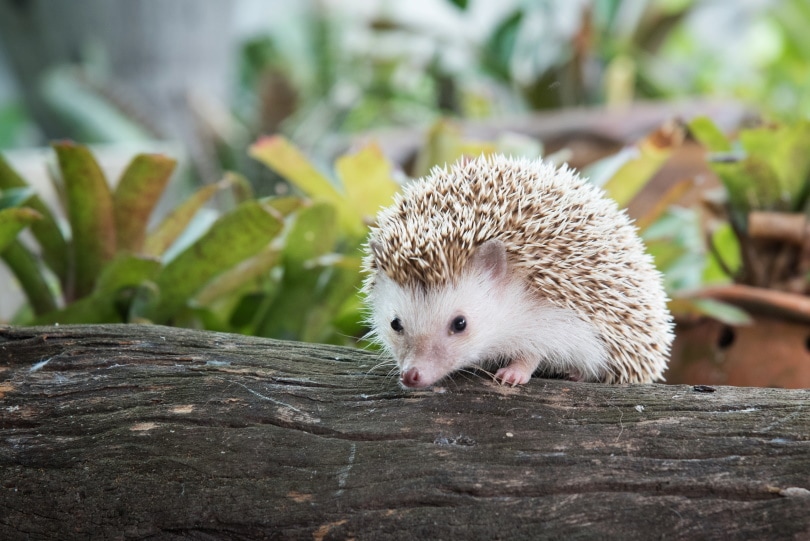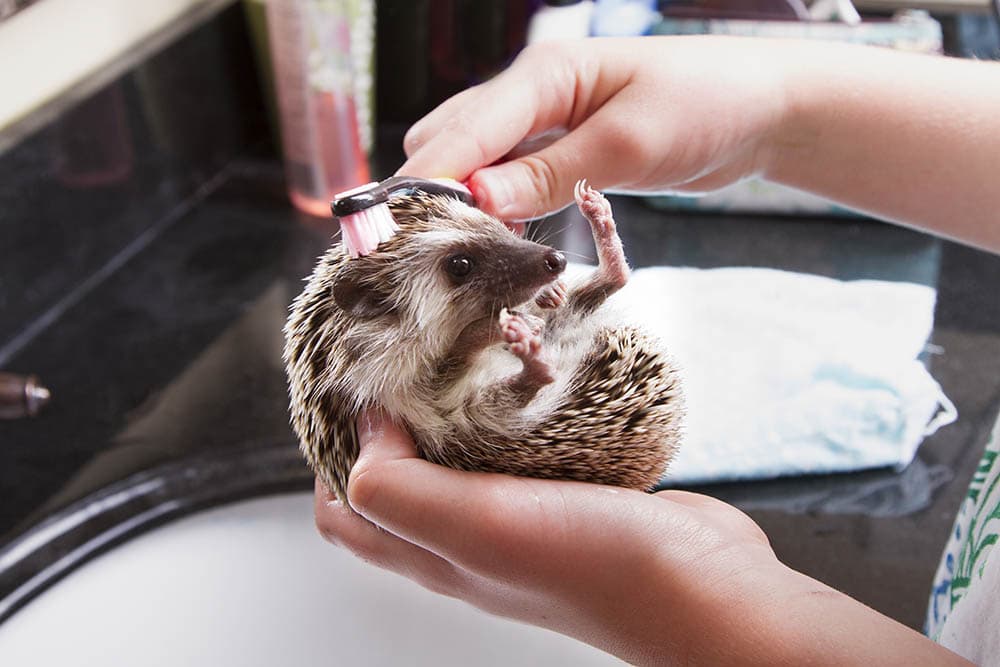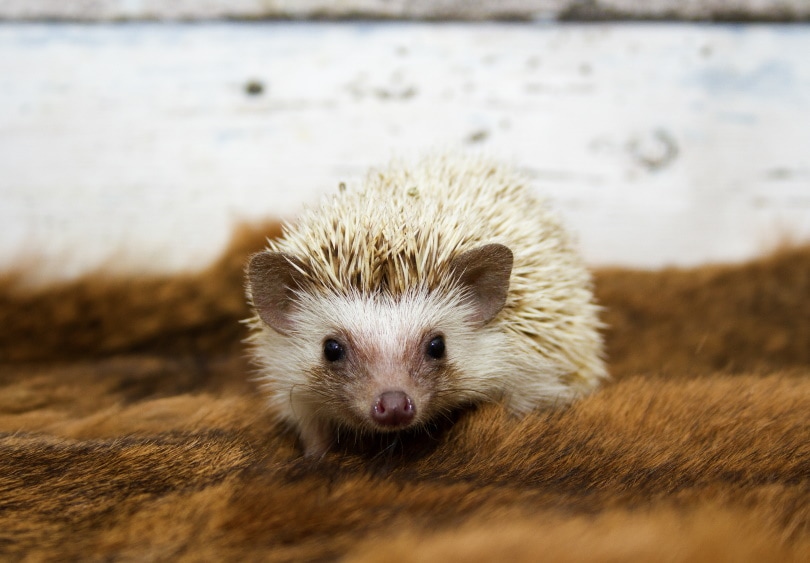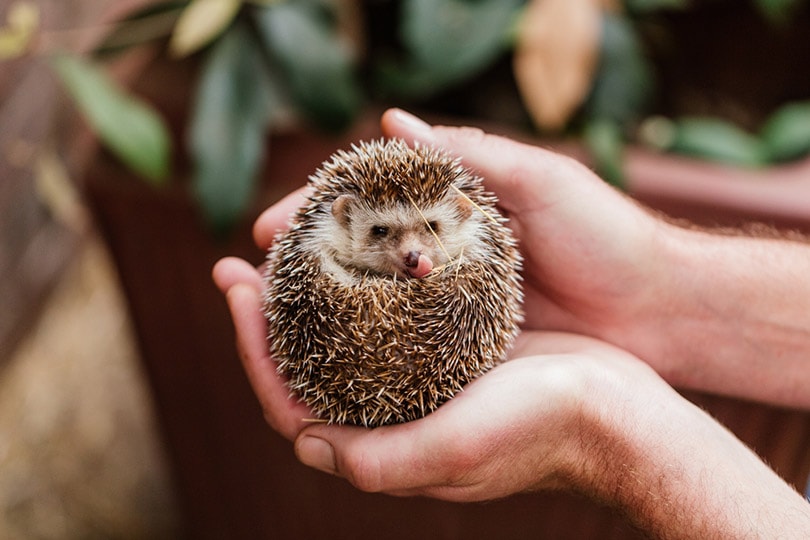
Click to Skip Ahead
Chances are that if you own a hedgehog or know someone who does, it’s an African Pygmy Hedgehog. These hedgehogs are domesticated and bred to be pets in the United States.
European Hedgehogs are wild animals in Europe and do not make suitable pets. In many places around the world, it is illegal to own these animals. But just because they’re wild doesn’t mean humans can’t care for them and help make their lives outdoors more enjoyable.
In this article, we look at the differences between the European and African Pygmy Hedgehogs and find out more about how to care for these wild but adorable critters in Europe. Let’s get started.
Quick Facts About the Wild European Hedgehog
| Species Name: | Erinaceus europaeus |
| Family: | Erinaceidae |
| Care Level: | Easy |
| Temperature: | 75°F–85°F |
| Temperament: | Docile, playful, shy, nocturnal |
| Color Form: | Brown and cream |
| Lifespan: | 3–4 years in the wild |
| Size: | 9.5–14 inches long; 1–4.4 pounds |
| Diet: | Omnivorous |
| Natural Habitat: | Scrubs, dunes, backyards, parks, gardens, woodlands |
| Compatibility: | Usually friendly with other animals but prefers solitude |
Wild European Hedgehog Overview
The wild European Hedgehog is found across Europe and into central Asia. They have a native range that spans from Ireland, Great Britain, Scandinavia, and Western Europe to the Czech Republic.
These little nocturnal critters like to keep covered as they move around their territories. They like dense plant coverage and are common sights in backyard gardens with plenty of lush greenery. Since they enjoy eating insects and other garden pests, they are known as the gardener’s best friend.
You’ll see these animals in their wild habitats from April through September. They hibernate over the winter, usually starting in November.
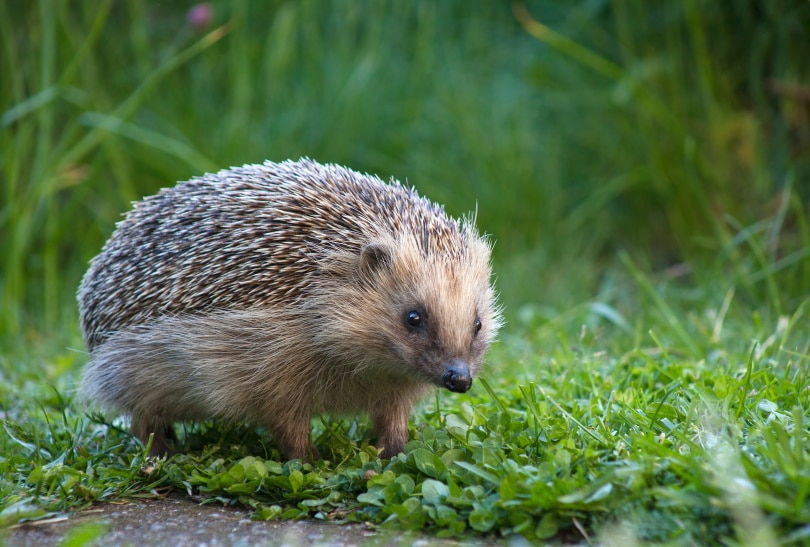
Wild European Hedgehog vs. African Pygmy Hedgehog: What’s the Difference?
The biggest difference between the wild European Hedgehog and the African Pygmy Hedgehog is that the latter is bred in captivity and sold as a pet. African Pygmy Hedgehogs originated in the African savanna. They live in scrub forests in the wild.
Both hedgehogs hibernate over the winter in the wild. However, in captivity, African Pygmy Hedgehogs can’t perform the same behaviors that would equip them for hibernation, such as finding a suitable resting place and making sure they stored up enough fat reserves for survival. If they try to hibernate in captivity, anyway, this could be dangerous for them.
In terms of appearance and diet, both hedgehogs are similar. The European Hedgehog is slightly larger, though. African Pygmy Hedgehogs are 6–10 inches long and weigh up to 1.5 pounds.
Appearance & Varieties
The wild European Hedgehog is mostly brown with 5,000–7,000 spikes, or quills1, covering their entire bodies except for their face, legs, and bellies. These spikes are made of keratin. Each spike is attached to a muscle that will contract when the animal feels threatened. This causes the hedgehog to curl into a tight ball with the spikes exposed to ward off predators.
Most hedgehogs are brown, but a blonde color variation due to recessive genes exists. This gives the hedgehog a cream color and lightens their normally black eyes. Blonde hedgehogs are not albino, although albino hedgehogs do rarely occur.
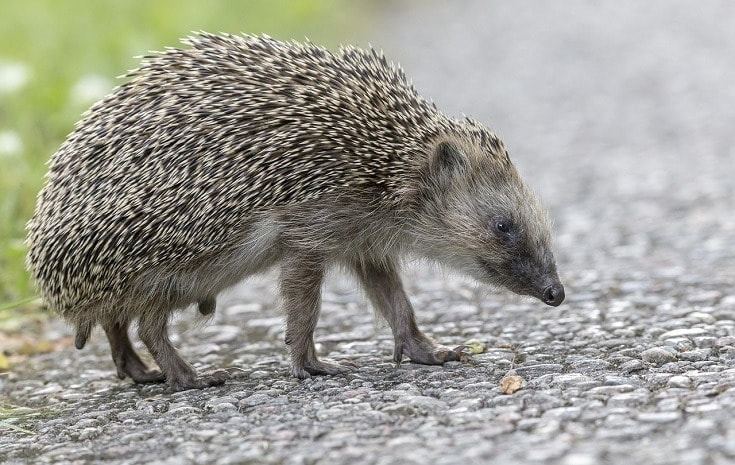
How to Take Care of a Wild European Hedgehog
Wild as they may be, European Hedgehogs can still benefit greatly from the care provided by humans. Since most people enjoy having hedgehogs in their gardens as natural pest control, they want to attract them and get them to stay.
By offering food and shelter, you can have a garden full of happy hedgehogs and help make their lives a little easier.
Feeding
As wild animals, European Hedgehogs can find their own food. However, it requires a great deal of energy for these animals to search for their meals. When they prepare for hibernation, they need enough fat reserves to keep them going all winter long. Offering food helps them stay healthy and well-rested.
Hedgehogs can eat cat or dog biscuits. Young hedgehogs can only eat these if they’re soaked in water first. Canned dog or cat food is a great way to give your garden hedgehog the protein that they need. Hedgehog food is also acceptable.
Hedgehogs are lactose intolerant, so no milk or dairy products should be left out for them2.
They will greatly appreciate bowls of clean, fresh water.
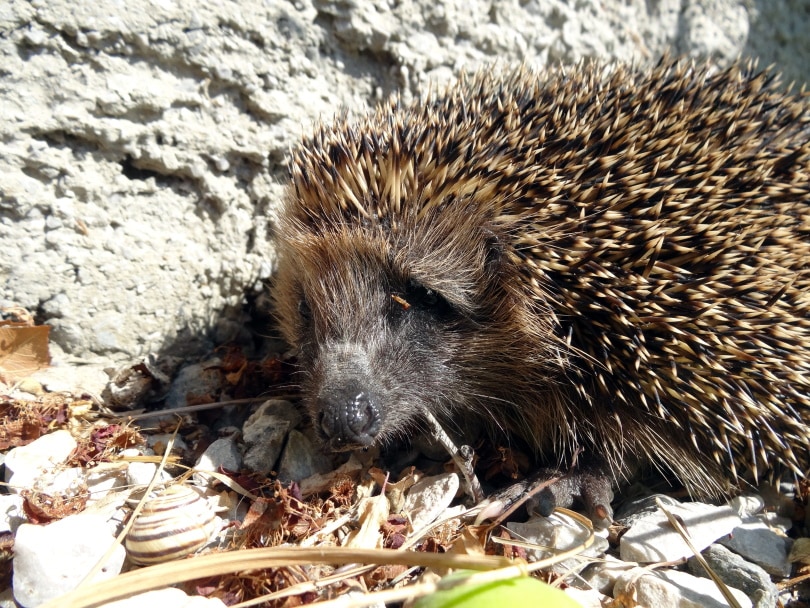
Setup
If other wild animals are a concern, you can set up a feeding station that only hedgehogs can access. Cutting a hole in the side of a plastic bin and attaching a piece of piping just large enough to allow for hedgehogs is a way to keep larger animals, like cats and foxes, from eating the food. A shelter can also be built out of bricks or stones, made to only be large enough to hold one hedgehog.
Additionally, hedgehogs hibernate over the winter and need safe, warm places to do this. By providing this for them, you can be sure your hedgehog friends return to your garden year after year.
Hedgehog Shelters
If you’d prefer to purchase shelters for your wild hedgehogs to hibernate in, the Wildlife World Hoglio and Igloo are perfect choices. Each shelter is suitable for one hedgehog. If you have multiple hedgehogs, you’ll need multiple shelters. They can stay protected from the elements and wild animal predators while they hibernate in these houses.
If you’d prefer to make your own hedgehog house, you can do so easily with just a few materials. With wine crates, timber, and a few tools, you can build your garden friends their own hideaways. See a step-by-step plan here.
Ventilation is important, so if you’re building your own hedgehog house, a hose should be attached to make sure your hedgehog gets oxygen while they sleep. Over the winter, keep the entrances to the shelters and the ends of the hoses free of debris.
To give the hedgehogs comfortable spots to sleep, add bedding like straw, dry leaves, or hay. Place the shelters in the quietest parts of the area that you can find. They should be out of the way and partially covered by leaves, bushes, or low-hanging branches if possible. They should not be placed where there is usually a great deal of commotion.
You can pack food away in the shelter so hedgehogs have access to it as they are settling in for hibernation.

When Hedgehogs Emerge
European Hedgehogs usually hibernate from November to March or April. When they emerge, they will be hungry! While hibernating, they can lose a third of their body weight. After they leave their shelters, these become perfect feeding stations. They can be filled with food so your hedgehog can return to their resting place to eat safely.
Do Wild European Hedgehogs Get Along With Other Animals?
Wild European Hedgehogs are prey animals for badgers and foxes. Since they are usually defensive, they don’t let their guard down around other animals. They’re solitary creatures and prefer to be by themselves. They can coexist with peaceful, non-threatening animals, but they don’t typically make friends with them.
What Do Wild European Hedgehogs Eat?
Wild European Hedgehogs are omnivores, but they mostly eat insects. They are opportunist feeders and will eat whatever they can. They spend long periods in gardens searching for worms, caterpillars, and other bugs.
They are also fans of fruit and vegetables. Apples, berries, bananas, tomatoes, and squash are foods that they will enjoy if you offer them.
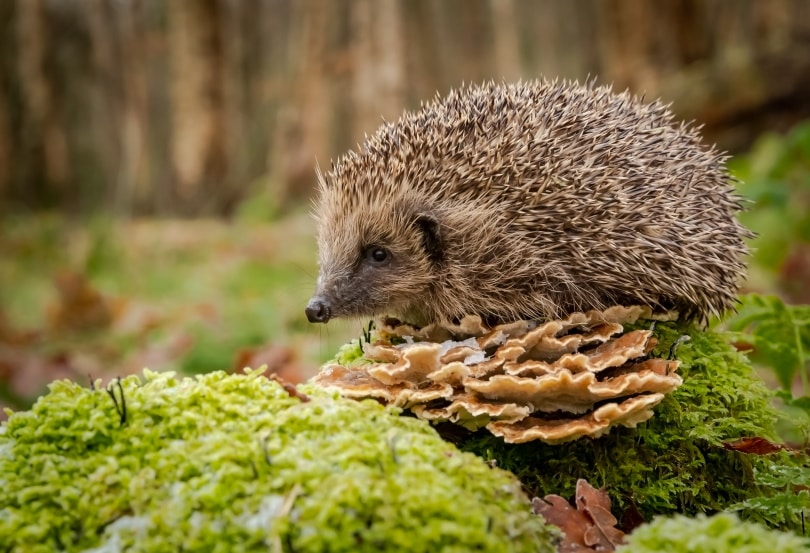
Breeding
Breeding season for hedgehogs usually starts in June. From March to April, European Hedgehogs spend their time eating and building up their body weight from hibernation. They need to consume enough food to be healthy enough to breed.
Females are pregnant for around 5 weeks. Most hedgehogs are born in July, and the females will need more food for themselves to have the energy to nurse their young.
Are Wild European Hedgehogs Suitable for You?
Wild European Hedgehogs are not suitable to keep as pets. However, if you have these animals in your garden or backyard, you can still care for them. By helping them have access to food, water, and shelter, you’ll make their lives easier.
Wild European Hedgehogs are not animals that belong in captivity, but they are a part of Europe’s ecosystem and are beloved by many. These spiky friends are good at controlling garden pests and are delightful to watch.
The wild hedgehog population is declining, unfortunately. Their numbers have fallen by 50% over the last 20 years3. By doing what we can to help them survive, we can preserve these adorable and interesting animals.
- You may also want to read about: Indian Hedgehog
Featured Image Credit: aaltair, Shutterstock



